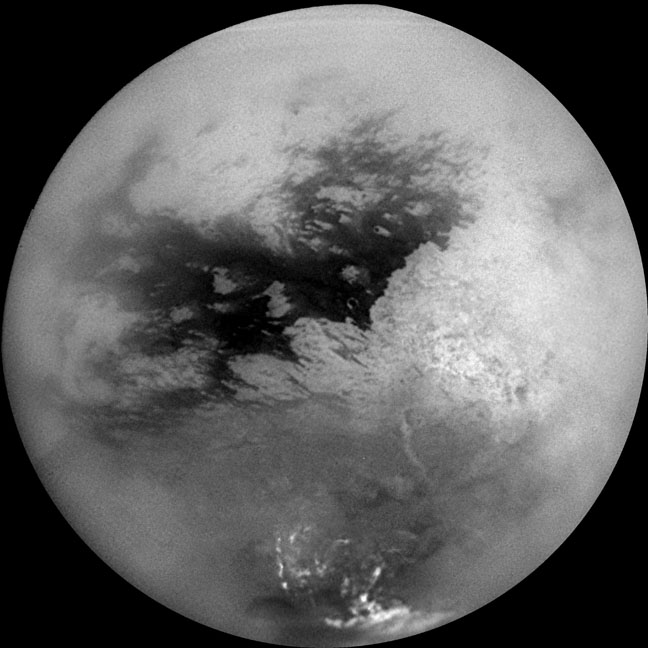|
|
||
 Credit: NASA/JPL/Space Science Institute Caption: A mosaic of nine
processed images recently acquired during |
||
|
pic of the day Links:
Society for
|
Dec
02, 2004 Scientists believe the images show a landscape that is still being shaped. "We are seeing a place that is alive, geologically speaking," says Charles Elachi, head of the team running Cassini's radar instrument. The reason given is that Titan must have suffered numerous meteor impacts in the past, yet its surface today is largely crater-free. Somehow these scars must have been eroded or filled in. The same was said about Venus when orbiting spacecraft revealed that planet's surface beneath its clouds. However, it is only supposition that Titan's (and Venus') surface is still being shaped. We have no evidence that either were cratered by numerous impacts in the past. We have no evidence of the impactors. There may have been no impact craters to fill. We must allow that Venus and Titan may have new surfaces if planets and moons were not formed at the same time through impact accretion billions of years ago. Their atmospheres are certainly anomalous. But what of the cratering seen on other bodies in the solar system? No one has witnessed a crater formed by a celestial impact. The relationship between craters and impacts is a hypothesis that has been accepted without considering another common form of cratering - that of electrical cratering. And electrical cratering has the virtue of explaining all of the curious features of planetary craters, particularly their circularity and tendency to occur in chains, with little disturbance of one crater by its neighbor. The enigma of Titan may prove to be the result of an unquestioned belief in the nebular hypothesis. Predictions based on that story have had no success in the space age. So we may confidently pursue the idea that planets did not accrete from a solar nebula. Professor William H. McCrae wrote, "It is impossible to discover the origin of the solar system by observing it now, and working steadily backwards in time in order to infer the whole of its past history." While agreeing with this statement, we must nevertheless make use of all available human observations of the sky before attempting to work forward from some hypothetical beginning. One of the greatest, albeit unheralded, surprises of the 21st century will be that the last chapter of the development of the solar system was witnessed and recorded by modern humans in prehistory. A forensic attitude to that evidence can yield far more reliable predictions about what we will find in space than the purely hypothetical approach.
For more information about the Cassini-Huygens
mission, visit
|
|
|
Copyright 2004: thunderbolts.info |
||
